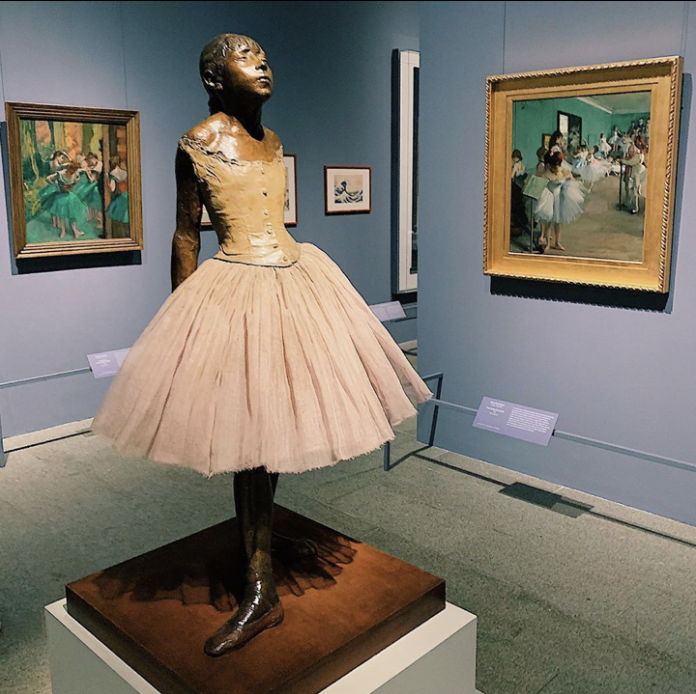She’s not just a “Little Dancer Age Fourteen,” she’s a strong young woman trying to rewrite her story, and we could learn a lot from her.
Like any good graduate of a liberal arts education, I could easily identify the Little Dancer as a work of Degas as soon as I saw it at the Met. I’ve even paid a bit of extra attention because I grew up dancing.
For me, dance was an artistic outlet, a place to belong, a spiritual connection to the universe, and for awhile, a profession.
It meant something else entirely to this little dancer.
The corps de ballet in those days were street rats. Since they were “unfit” to marry well, their only options in 1880’s Paris were to be a laundress or a prostitute.
This dancer, with her chin jutting out, is not just sassy, she’s fighting for her future. She’s attempting to rise above her station. Her mother was a laundress. Her sister was a prostitute. She wanted more.
It was an open secret that the ballet girls were from the streets. Thus, polite society was not at all interested in seeing a tiny dancer sculpted and displayed alongside fine works of art. She wasn’t “worthy” of it.
This tiny dancer had an entirely different story for herself. She believed herself worthy of a better life. She was fighting the odds and taking initiative, despite what those around her would say.
Our life stories may not be so rags to riches, but they are always about whether you are going to accept the story that everyone tells you about your life, or whether you are going to choose to co-author it.
Need help crafting the next chapter of your life story? I’d love to talk.
